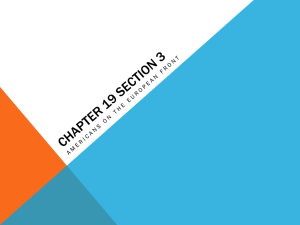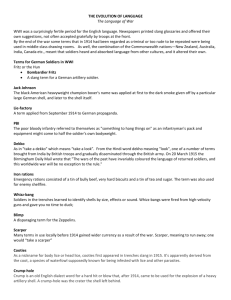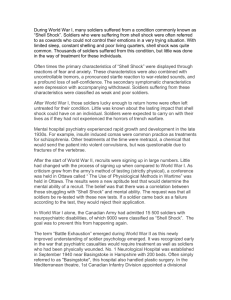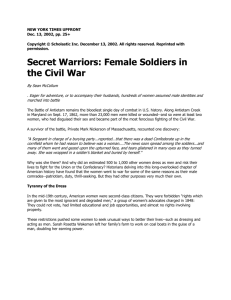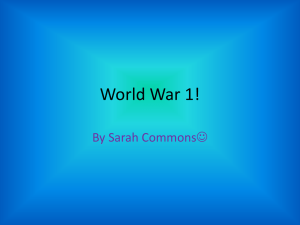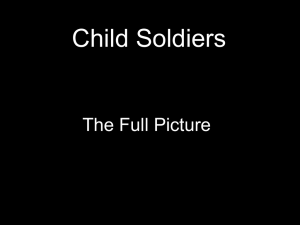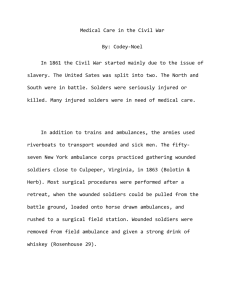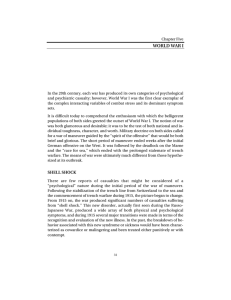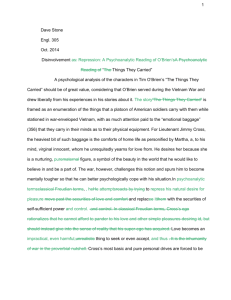War`s long-term effects Soldiers not only suffered on the battlefield
advertisement
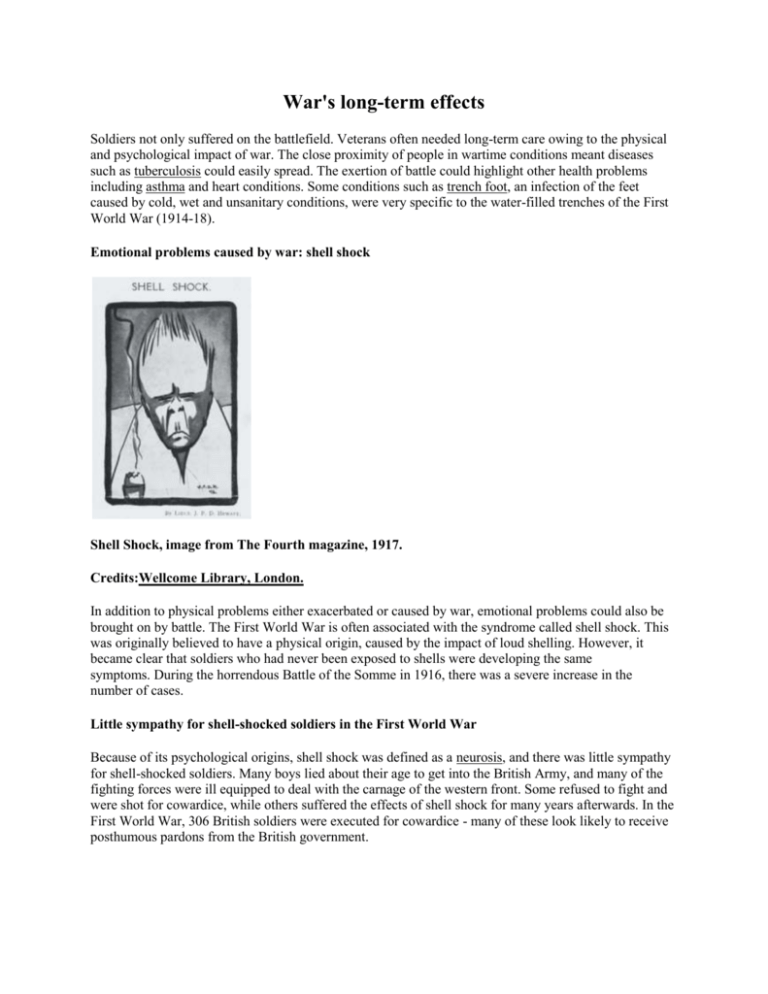
War's long-term effects Soldiers not only suffered on the battlefield. Veterans often needed long-term care owing to the physical and psychological impact of war. The close proximity of people in wartime conditions meant diseases such as tuberculosis could easily spread. The exertion of battle could highlight other health problems including asthma and heart conditions. Some conditions such as trench foot, an infection of the feet caused by cold, wet and unsanitary conditions, were very specific to the water-filled trenches of the First World War (1914-18). Emotional problems caused by war: shell shock Shell Shock, image from The Fourth magazine, 1917. Credits:Wellcome Library, London. In addition to physical problems either exacerbated or caused by war, emotional problems could also be brought on by battle. The First World War is often associated with the syndrome called shell shock. This was originally believed to have a physical origin, caused by the impact of loud shelling. However, it became clear that soldiers who had never been exposed to shells were developing the same symptoms. During the horrendous Battle of the Somme in 1916, there was a severe increase in the number of cases. Little sympathy for shell-shocked soldiers in the First World War Because of its psychological origins, shell shock was defined as a neurosis, and there was little sympathy for shell-shocked soldiers. Many boys lied about their age to get into the British Army, and many of the fighting forces were ill equipped to deal with the carnage of the western front. Some refused to fight and were shot for cowardice, while others suffered the effects of shell shock for many years afterwards. In the First World War, 306 British soldiers were executed for cowardice - many of these look likely to receive posthumous pardons from the British government. Psychological testing: assessing the suitability of soldiers During the Second World War (1939-45) psychiatrists in the United States used psychological testing to determine a recruit’s suitability to be a soldier. Despite these tests, the effects of battle were still hard on soldiers. Many demonstrated symptoms of high levels of stress, a condition referred to as battle fatigue. These soldiers were removed from the fighting and rested. More women were closer to the front lines than in previous wars, but the authorities still thought they were less suited to being close to the fighting than men. A number of men and women were discharged from the forces in the Second World War as they were considered unsuitable for the military. War syndromes: the impact of war on behaviour and the mind Post-traumatic stress disorder (PTSD) was the term used after 1980 to explain the effect of war on soldiers and was later used outside the military to describe the impact of a traumatic event on an individual. However, there is a long history of different diagnoses used to try and get to grips with the psychological impact of war. The most recent war syndromes include Gulf War syndrome, experienced mainly by American and British soldiers who fought in the 1991 Gulf War. Wartime health of populations: radiation in Japan War can also have a dramatic impact on the health of civilian populations. The hydrogen bombs dropped on the Japanese cities of Hiroshima and Nagasaki had a horrendous immediate impact, killing thousands. They also had long-term effects on the population. Radiation sickness and birth defects of children were problems experienced long after the buildings destroyed by the bomb were rebuilt. Children and war Civilians, particularly children, can also suffer the effects of trauma. Child psychoanalysis emerged during the Second World War from the work of Anna Freud, psychoanalyst and daughter of Sigmund Freud. She set up a centre for young war victims called the Hampstead War Nursery. Here the children separated from their parents were given foster care. After the war this continued at the Bulldogs Bank Home, an orphanage that was run by Freud’s colleagues and which took care of children who had survived the concentration camps. The after effects of war for the population Bomb damage to St Charles Hospital, London, 1940. Credits:Wellcome Library, London. Civilian populations often have to deal with the after effects of war. They include damage to infrastructure such as hospitals and to medical care, often a result of a shortage of doctors. A number of countries, especially in Asia, have had to deal with the devastating effects of land mines on the local population.




